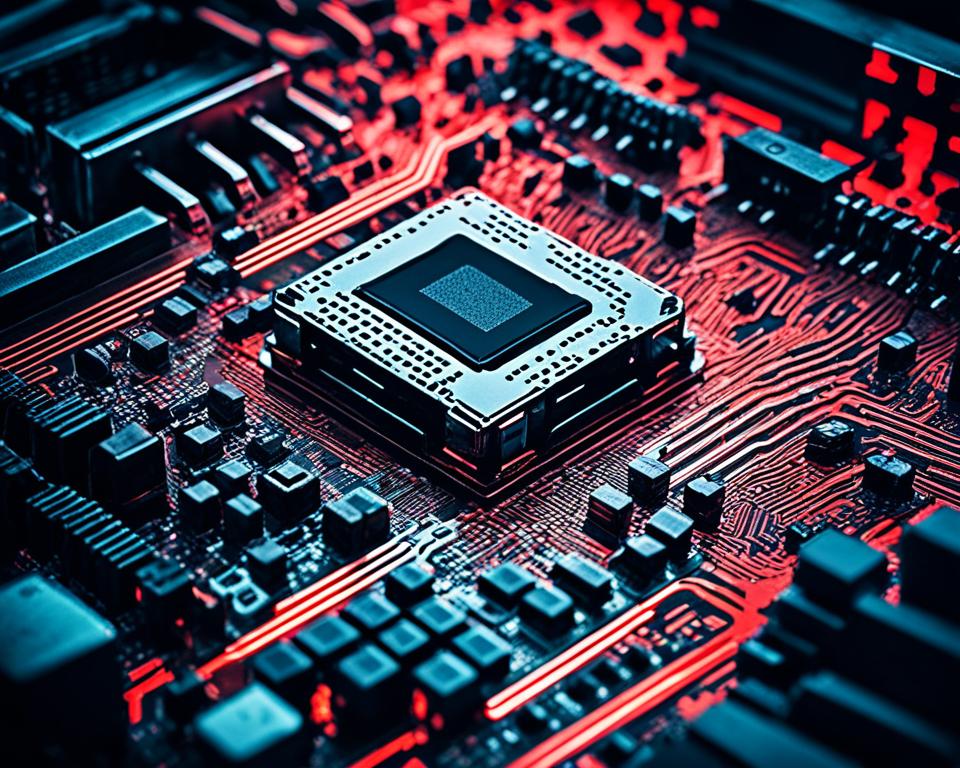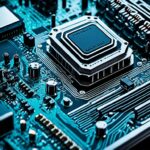Imagine this: You sit down in front of your computer, ready to tackle an important task or indulge in some well-deserved gaming. You press the power button, but nothing happens. Panic sets in as you realize that your motherboard is bricked, rendering your computer useless.
A bricked motherboard can be a frustrating situation, often caused by a failed BIOS update or other critical error. But before you start considering expensive motherboard replacements or giving up on your beloved system, there are recovery techniques you can try to breathe life back into your motherboard.
In this article, we will guide you through various methods and steps to help you fix a bricked motherboard effectively and safely. From basic troubleshooting to advanced recovery techniques, we’ve got you covered. So, let’s dive in and rescue your motherboard from the depths of despair!
Key Takeaways:
- Bricked motherboards can be fixed with recovery techniques, even after a failed BIOS update.
- Understanding the causes and symptoms of a bricked motherboard is crucial for troubleshooting.
- Basic fixes like checking power supply and connections, resetting CMOS, and reseating RAM can sometimes resolve the issue.
- BIOS recovery methods, such as crash-free BIOS and manufacturer tools, may be necessary for more severe cases.
- Prevent future bricking incidents by following precautions, seeking professional help if needed, and implementing preventive measures.
Understanding the Problem: What is a Bricked Motherboard?
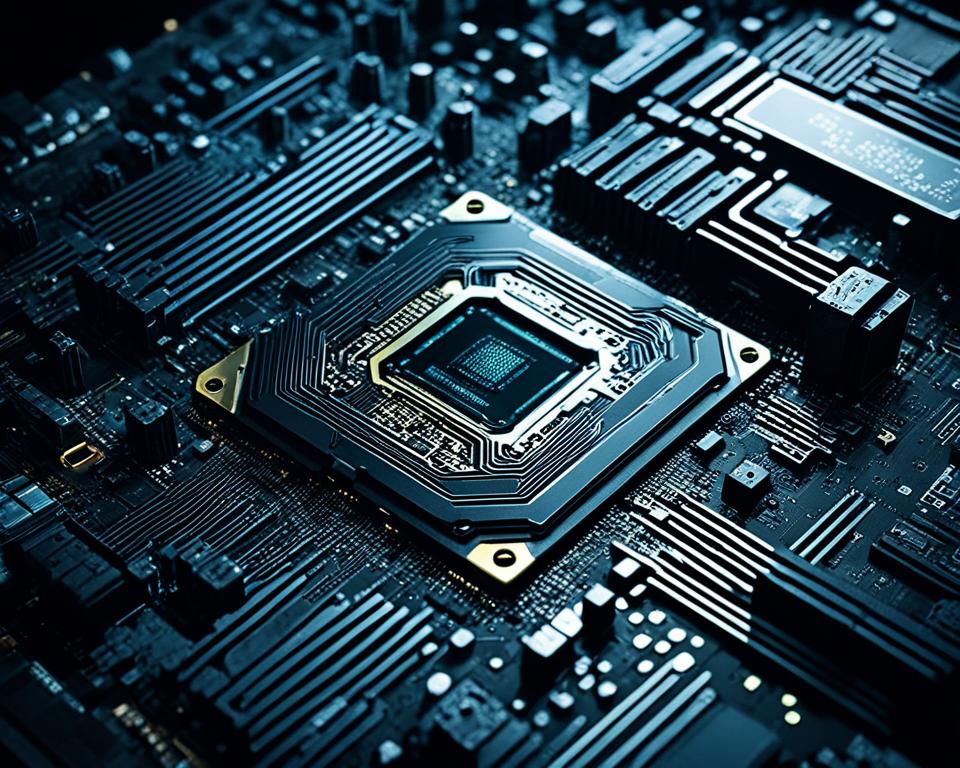
Before diving into the recovery techniques, it’s important to understand what exactly a bricked motherboard is. A bricked motherboard refers to a motherboard that is rendered inoperable or unresponsive due to a critical error, often caused by a failed BIOS update or hardware malfunction.
Common symptoms of a bricked motherboard include:
- Boot loops
- Error codes
- Inability to access the BIOS
Knowing the causes and symptoms will help in troubleshooting and finding the right solution. By understanding the nature of a bricked motherboard, you can effectively assess the severity of the issue and determine the appropriate course of action.
“A bricked motherboard refers to a motherboard that is rendered inoperable or unresponsive due to a critical error, often caused by a failed BIOS update or hardware malfunction.”
| Cause | Symptoms |
|---|---|
| A failed BIOS update | Boot loops, error codes, inability to access BIOS |
| Hardware malfunction | Unresponsive motherboard, failure to power on |
Identifying the causes of a bricked motherboard is crucial in resolving the issue. Whether it’s a failed BIOS update or a hardware malfunction, understanding the root cause will enable you to take appropriate steps to recover your motherboard.
Troubleshooting and Basic Fixes
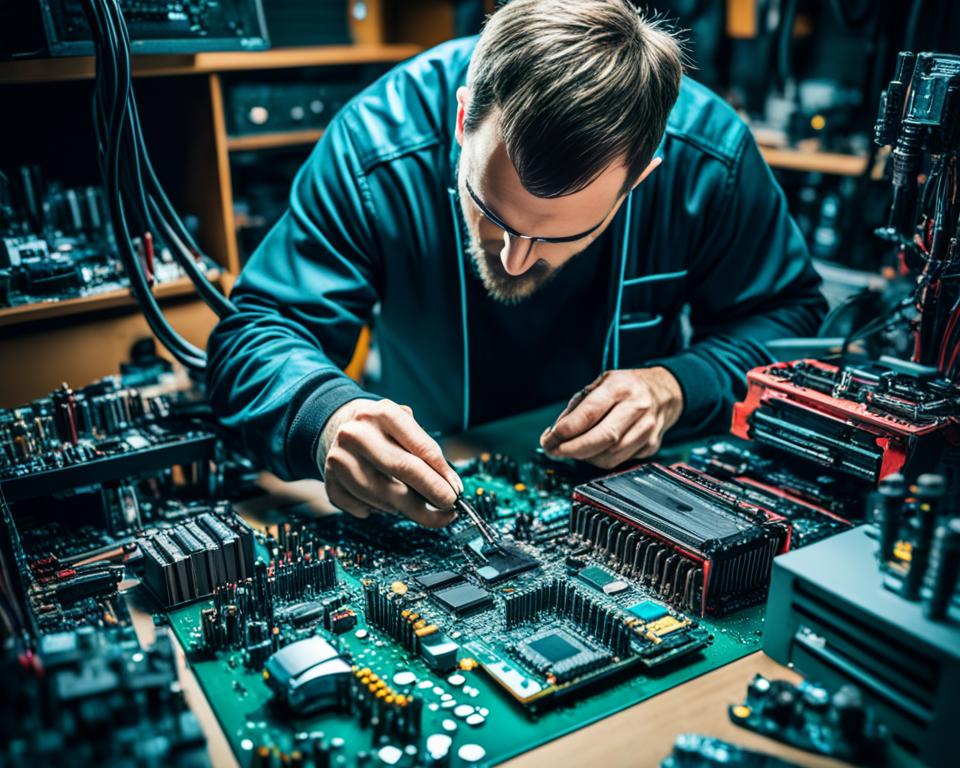
When faced with a bricked motherboard, it’s essential to start with some basic troubleshooting steps and fixes. These initial actions can potentially resolve the issue and get your motherboard back up and running. Here are the first steps to take:
- Check the power supply and connections: Ensure that the power supply is receiving electricity and all necessary connections are secure.
- Reset the CMOS: Clear the CMOS (Complementary Metal-Oxide-Semiconductor) settings to reset the BIOS configuration.
- Remove and reseat the RAM: Take out the RAM modules and then reinsert them firmly into their slots.
- Disconnect and reconnect all cables: Disconnect all cables from your motherboard and then reconnect them to ensure proper connections.
These basic fixes can often resolve minor issues that may have caused your motherboard to become bricked. However, if the problem persists, further troubleshooting and advanced recovery techniques may be necessary.
Image:
BIOS Recovery Methods
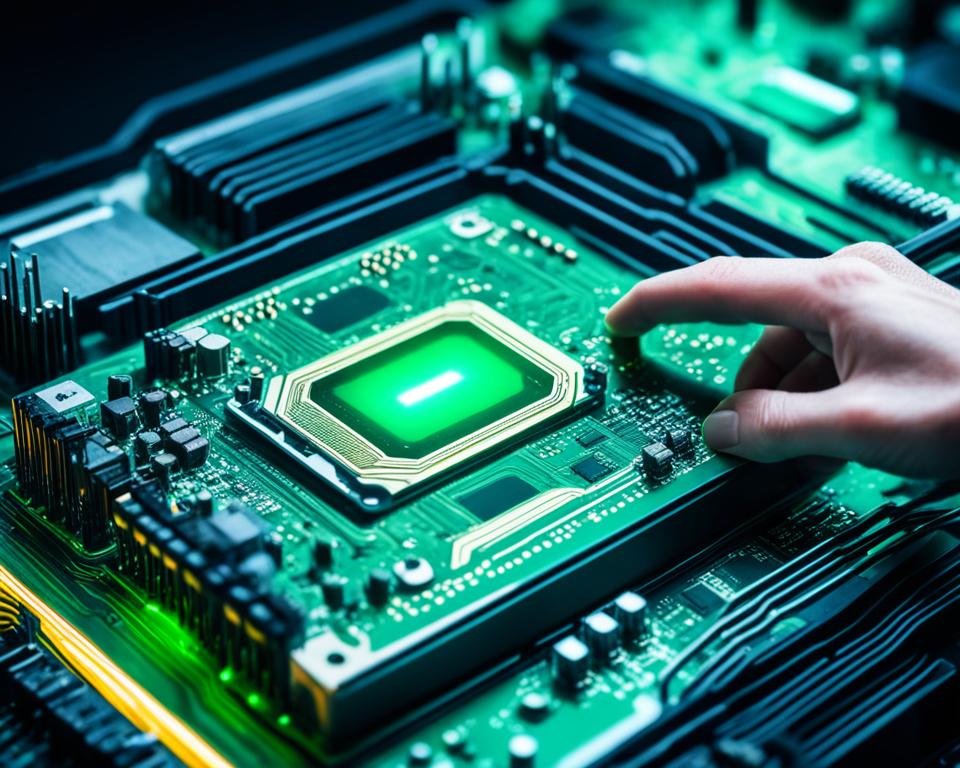
If the basic fixes don’t work, the next step is to attempt BIOS recovery. There are several methods you can try:
- Crash-Free BIOS: Some motherboards have a built-in recovery feature that allows you to restore the BIOS from a USB drive or CD. This method is often referred to as crash-free BIOS recovery. To initiate this process, you’ll need to download the correct BIOS file from the manufacturer’s website onto a USB drive or CD. Then, insert the USB drive or CD into the designated BIOS recovery port on your motherboard and follow the instructions provided in your motherboard’s manual. This method is relatively user-friendly and doesn’t require advanced technical knowledge.
- Manufacturer Tools: Check if your motherboard manufacturer provides specific tools or utilities for BIOS recovery. Some manufacturers offer dedicated software or firmware that can assist in recovering a bricked BIOS. These tools may vary depending on the motherboard brand and model, so it’s crucial to visit the manufacturer’s website and look for any available BIOS recovery software or instructions. These tools are often designed to simplify the recovery process and guide users through the necessary steps.
- External Programmer: In more severe cases where the built-in recovery features or manufacturer tools don’t work, you may need to use an external programmer to flash the BIOS firmware manually. This method requires technical knowledge and access to specialized tools. It involves connecting an external device, such as an EEPROM programmer or SPI flash programmer, to the motherboard’s BIOS chip and writing the correct BIOS firmware to it. It’s important to note that this method carries a higher risk and should only be attempted by experienced individuals who are familiar with BIOS flashing procedures.
When attempting any BIOS recovery method, it’s important to carefully follow the instructions provided by the motherboard manufacturer. Incorrectly flashing the BIOS can lead to further damage or complete motherboard failure. If you’re unsure or uncomfortable performing the recovery yourself, it’s recommended to seek professional assistance.
Remember, every BIOS recovery situation is unique, and the success of recovery methods may vary. Patience and caution are key during the recovery process. If one method doesn’t work, don’t give up! Explore other options and consider seeking help from the motherboard manufacturer or a professional technician.
Precautions and Best Practices
When it comes to BIOS updates or other modifications that could potentially brick your motherboard, it’s crucial to always prioritize precautions and follow best practices. By taking a few simple steps, you can significantly reduce the risk of encountering brick-related issues and ensure a smooth and safe experience for your motherboard.
1. Use Reliable Power Sources
One of the most common causes of motherboard bricking is sudden power outages during the update process. To avoid this problem, make sure you have a stable and reliable power source. Consider using a UPS (Uninterruptible Power Supply) to protect your system from unexpected power failures.
2. Ensure Compatibility
Before proceeding with a BIOS update, it’s essential to ensure that the update is compatible with your specific hardware configuration. Check the manufacturer’s website for compatibility information and verify that all necessary prerequisites are met. Installing an incompatible update can lead to malfunctioning or bricked motherboards.
3. Backup Your Existing BIOS
Prior to making any changes or updates to your BIOS, it’s highly recommended to create a backup of your current BIOS firmware. This backup will serve as a fail-safe if anything goes wrong during the update process. Keep the backup file in a safe location on a separate storage device.
4. Read and Follow Instructions Carefully
When updating your motherboard’s BIOS or performing any modifications, carefully read and follow the manufacturer’s instructions. Ensure that you understand each step before proceeding to minimize the risk of making mistakes. Neglecting proper instructions can lead to irreversible damage to your motherboard.
By implementing these precautions and adhering to best practices, you can significantly minimize the chances of brick-related issues during BIOS updates or other modifications. Remember, prevention is always better than cure when it comes to motherboard maintenance.
Seeking Professional Help
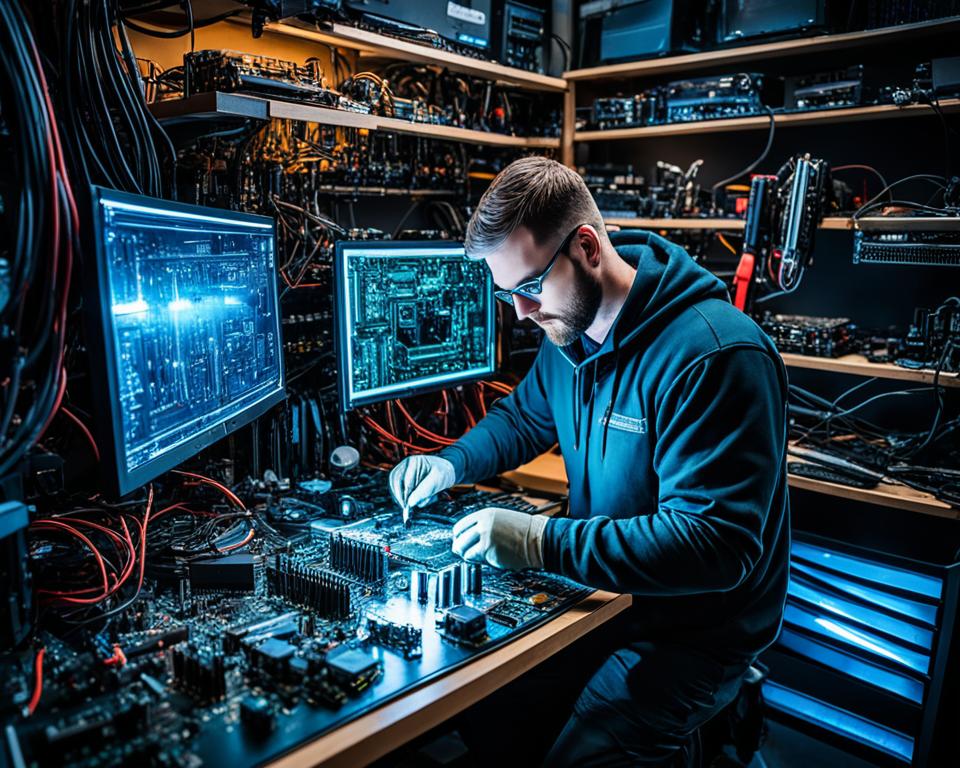
If you’ve exhausted all troubleshooting and recovery options without success, it may be time to seek professional help. There are specialized motherboard repair services and technical support teams that can assist with diagnosing and fixing more complex motherboard issues. Consider contacting these professionals for expert guidance and potential solutions tailored to your specific situation.
| Benefits of Professional Help | Examples of Professional Services |
|---|---|
| 1. Expert Diagnosis: Experienced technicians can accurately diagnose the root cause of motherboard issues. | 1. ABC Repair Services |
| 2. Technical Expertise: Professionals have in-depth knowledge of motherboard components and repair techniques. | 2. XYZ Tech Solutions |
| 3. Efficient Solutions: Professional help can save time by providing efficient and effective solutions. | 3. Motherboard Support Inc. |
| 4. TechPro Motherboard Repair |
“When faced with complex motherboard issues, it is crucial to consult professionals who specialize in motherboard repair. They can provide advanced diagnostics, detailed solutions, and personalized technical support to address the specific needs of your motherboard.”
By seeking professional help, you can benefit from their expertise and ensure that your motherboard is in capable hands. Remember to provide detailed information about your motherboard and the problems you’re experiencing to help the professionals accurately assess the situation.
Through their experience and technical knowledge, these professionals can provide the necessary repairs or guidance to resolve even the most challenging motherboard issues. Don’t hesitate to reach out for assistance when all other avenues have been explored.
Preventing Future Bricking Incidents
Now that you’ve successfully recovered your bricked motherboard, it’s crucial to take preventive measures to avoid future incidents and ensure the stability of your hardware. By implementing these preventive measures, you can minimize the risk of experiencing another bricked motherboard in the future.
Here are some essential steps you can take:
- Regularly update your BIOS: Keeping your BIOS up to date is vital for system performance and security. However, it’s crucial to approach BIOS updates with caution to prevent future bricking incidents. Follow best practices recommended by your motherboard manufacturer and ensure compatibility between BIOS updates and your hardware.
- Maintain a stable hardware environment: A stable hardware environment is essential for the health and longevity of your motherboard. Ensure your system has adequate cooling and a reliable power supply to avoid any sudden outages or voltage fluctuations that could potentially cause damage.
- Keep backups of your current BIOS firmware: Taking regular backups of your current BIOS firmware is an effective precautionary measure. In the event of a failed update or unexpected issue, having a backup will allow you to easily restore your motherboard to a functional state.
| Prevention Measures | Description |
|---|---|
| Regular BIOS Updates | Keep your BIOS up to date with caution, following best practices and ensuring compatibility with your hardware. |
| Maintain Stable Hardware Environment | Ensure adequate cooling and a stable power supply to minimize the risk of damage and future bricking incidents. |
| Backup BIOS Firmware | Regularly create backups of your current BIOS firmware to easily restore your motherboard in case of issues. |
By following these preventive measures, you can ensure the long-term stability and reliability of your motherboard, minimizing the risk of future bricking incidents. Remember, caution and attention to detail are key when it comes to maintaining the health of your BIOS and hardware.
Bios Maintenance Checklist
- Check for BIOS updates from your manufacturer regularly.
- Ensure compatibility between your hardware and BIOS updates.
- Create backups of your current BIOS firmware.
- Follow best practices and guidelines for BIOS updates.
- Maintain a stable hardware environment with proper cooling and power supply.
DIY Alternatives and Community Solutions
If you prefer a DIY approach or want to explore community solutions, there are various online resources and forums where you can find guidance and support. These communities often share their experiences and offer step-by-step instructions for recovering bricked motherboards. Participating in these discussions can provide alternative solutions and valuable insights from others who have faced similar issues.
Benefits of DIY Solutions
DIY solutions for recovering bricked motherboards can be incredibly rewarding. By taking matters into your own hands, you not only gain valuable knowledge about your hardware but also develop problem-solving skills that can be applied to future scenarios. Additionally, DIY solutions often offer the advantage of cost-effectiveness, allowing you to save money on professional repair services.
“Getting involved in DIY communities and exploring online resources gives you the opportunity to engage with like-minded individuals and build a network of support. You’ll be amazed at the wealth of information available and the willingness of others to lend a helping hand.”
Top Online Resources and Forums
Below, we’ve compiled a list of popular online resources and forums that can provide you with valuable insights and support when it comes to recovering bricked motherboards:
- XDA Developers (xda-developers.com): A community-driven forum with a dedicated section for motherboard and BIOS discussions.
- Tom’s Hardware (forums.tomshardware.com): A popular technology forum featuring a wide range of topics, including motherboard troubleshooting and repair.
- Reddit (reddit.com): Subreddits such as r/buildapc and r/techsupport are great places to seek help and advice from knowledgeable individuals.
- Overclock.net (overclock.net): A forum focused on hardware enthusiasts, where you can find discussions on motherboard repair and recovery.
- Manufacturer Forums: Many motherboard manufacturers have their own forums, where you can find specific information, guides, and support for your particular motherboard model.
Community Support and Collaboration
Engaging with these online communities not only provides access to a wealth of knowledge but also connects you with a supportive community of individuals who have faced similar challenges. Here, you can share your experiences, ask questions, and benefit from the collective wisdom of community members.
By collaborating with others, you can find innovative DIY solutions and gain insights that may not be readily available elsewhere. Remember to always follow safety precautions and consult reputable sources to ensure the accuracy and effectiveness of the information shared within these communities.
When to Consider Motherboard Replacement
In some cases, a bricked motherboard may be irreparable or the cost of repair may outweigh the benefits. If you’ve exhausted all recovery options and the motherboard remains non-functional, it may be more cost-effective to consider replacing the motherboard entirely. Evaluate the extent of the damage, the availability of replacement parts, and the cost of repair before making a decision.
Conclusion and Final Thoughts
Recovering a bricked motherboard can be a challenging process, but with the right techniques and precautions, it’s possible to revive your motherboard and get your system back up and running. Throughout this article, we explored various methods and steps that you can take to effectively and safely recover a bricked motherboard.
By following the troubleshooting and basic fixes, attempting BIOS recovery using crash-free BIOS or manufacturer tools, and taking preventive measures, you can minimize the risk of bricking your motherboard in the future. Always remember to exercise caution and consult reliable sources for guidance to ensure successful recovery.
If you’ve exhausted all your options and the motherboard remains non-functional, it may be more cost-effective to consider motherboard replacement. Evaluate the extent of the damage and the cost of repair before making a decision. Additionally, for those who prefer a DIY approach or seek community solutions, online resources and forums can provide valuable insights from others who have faced similar issues.
Bricked motherboard recovery is a complex task, but by taking the necessary steps, seeking professional help when needed, and implementing preventive measures, you can increase your chances of success and keep your system running smoothly. Remember, taking the time to properly recover and maintain your motherboard will ultimately save you time, money, and frustration in the long run.

